Half-moon Monstera plants have leaves with half green and half white or aurea. It may be perfect or nearly half the leaf and may affect all leaves or some. Some plants may have splashes, speckles, streaks, marbling, or even smaller sectors on either half portion.
We will tell you about types of plant variegation before telling you which one results in half-moon variegated Monstera. Afterward, we will narrow to these rare half-moon variegations and tell you everything you want to know.
Contents
Understanding variegated plant
A variegated plant has differently colored areas on leaves and, at times, stems, flowers, and fruits. These zones with different colors may appear as streaks, speckles, marbling, or sectors (blocks), with some occurring on leaf margins.
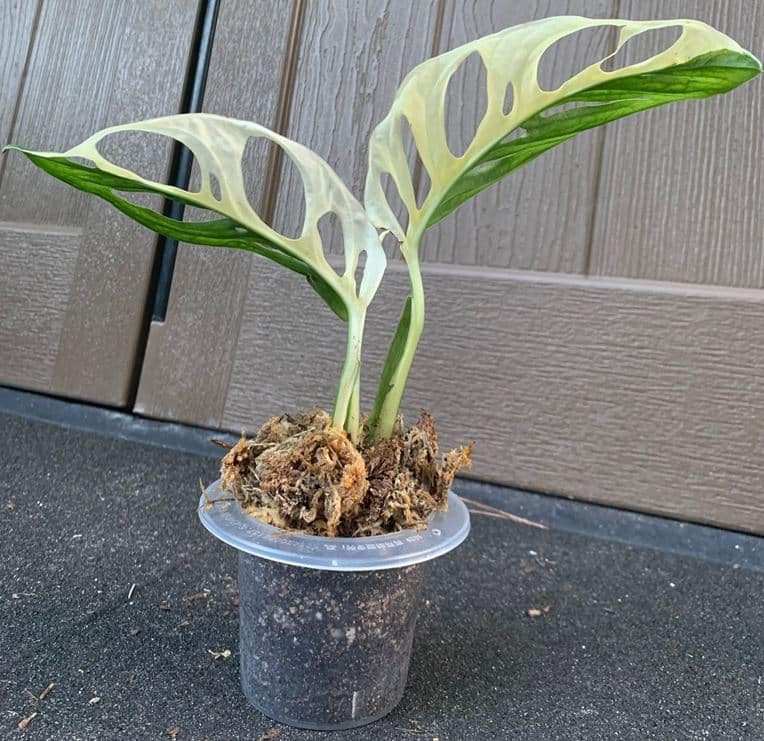
These color variations occur due to cell mutation, i.e., the “cells in the white (or yellow) sectors contain plastids that are deficient in chlorophyll and/or carotenoid pigment,” notes a study. Also, it may occur due to the masking of chlorophyll by other pigments.
The common types of variegations are:
- Genetic or natural: These are stable variegation contained in the plant DNA and can pass to offspring through sexual reproduction or seeds. It is also known as pigmented or gene pattern variegation and occurs due to lack of chlorophyll or its masking by other pigments.
- Chimeral: Result from unstable mutation of meristem cells that are not inheritable. Meristem tissues, which are sites for active cell growth and division. There are three types, periclinal, mericlinal, and sectorial.
- Pathological/viral: Occurs due to viral infections that create different colored leaf patterns.
- Reflective or blister: These types result in a shimmery or reflective appearance. It is due to air pockets between the top non-pigmented and inner pigmented layers.
- Transposon or jumping genes: This variegation results in splashes of color on leaves and flowers, and it is inheritable. It occurs when transposon or jumping genes move randomly on chromosomes.
- Artificial or chemical: Artificial variegation is a temporary one achieved by paints or chemicals that hamper chlorophyll production.
What causes Monstera variegation?
All variegation in Monstera, including Monstera albo, Aurea, and the mint, are due to sectorial chimera, which occurs in the apical (shoot) meristem. Before we tell you what it is, we need to talk a little more about meristems.
As you may be knowing, plants have shoot and root apical, intercalary (on nodes), lateral (on cork cambia and vascular), and leaf margin (monocots) meristems. The one responsible for variegation is apical meristem.
Apical meristems have three layers, the L1 that develops to the epidermis, the L2 next inner layer after the epidermis and gametes, and L3 forms the innermost cells and vascular system.
L1 and L2 have a single cell layer and form the tunica (outer layer). The cells here divide, and they divide sideways (anticlinal) while L3 forms corpus or innermost layer, and cells here divide randomly.
Sectorial variegation occurred when a portion of all three meristem layers of the meristem mutated cells. It is unstable, i.e., it may revert to green or even go entirely white.
The other two variegations are periclinal and mericlinal. Periclinal involves an entire mutated layer, and it is stable. It often results in leaves with variegated margins.
On the other hand, mericlinal is when only a section of a single layer has mutated cells. The resultant variegation is unstable. It is often a transition stage to stable periclinal chimera, or it may revert to green leaf.
The truth about half-moon Monstera
A half-moon Monstera is a rare variegated Monstera kind characterized by leaves with half white or aurea and half green portions. They are a true beauty.
You find half-moon Monstera albo and aurea variegata in the market. We have not seen a half-moon mint variegata. Also, these half-moon Monsteras may be Monstera adansonii, Monstera deliciosa, standleyana, and so on.
Here is what you need to know about half-moon variegated Monstera:
- They are scarce. For a plant to produce only half-moon variegated leaves, both the alternative side of the stem must have these mutated cells. You should see the whitish stripe on both stem sides along the line that leaves grow. It’s rare. Most plants have one side with half-moon leaves and random variegations.
- The cell mutation responsible for the variegation is random, unpredictable, and unstable. So, your plants revert to green, be entirely white, look marbled, have streaks or sectors, or have random variegations.
Will they revert or stop being half-moon?
Yes. Since half-moon variegated Monstera results from sectorial chimera, they are unstable. So, it’s very likely for it to revert. The reasons why these plants revert includes:
- A survival tactic: Plants that don’t get enough light may revert to green. It happens to increase food making (photosynthesis), improving survival chances. To grow and remain alive, plants need to make food.
- Another cell mutation: Your plant may start producing green leaves if there is another mutation.
- A means to adapt well to conditions: It may revert or change to adapt better to changes in heat or coldness. Borrowing from a study on Thermal Benefits from White Variegation of Silybum marianum Leaves, it concludes that white variegation may help in “elevating leaf temperature during cold winter days.
How to prevent half-moon reverting?
No one wants to see their half-moon Monstera revert. Some cases are indeed inevitable. But you can help manage the issue. How?
- Trim any parts losing the variegation: Cut it just before the last node with a half-moon leaf if you notice your plant reverting or turning entirely white.
- Provide optimum conditions and care: Ensure your plant has the correct soil mix, water it well, provide it with adequate humidity, the right temperature, and bright, indirect light for at least 12 hours. Also, fertilize your plant, prune it and ensure it’s free of pests or disease. Also, repot this Monstera after 2-3 years or if rootbound.
Top Half-moon variegated Monstera to buy
We’ve told you everything about half-moon variegated Monstera. If you still need to buy one, here are some of the best plants we found for sale:

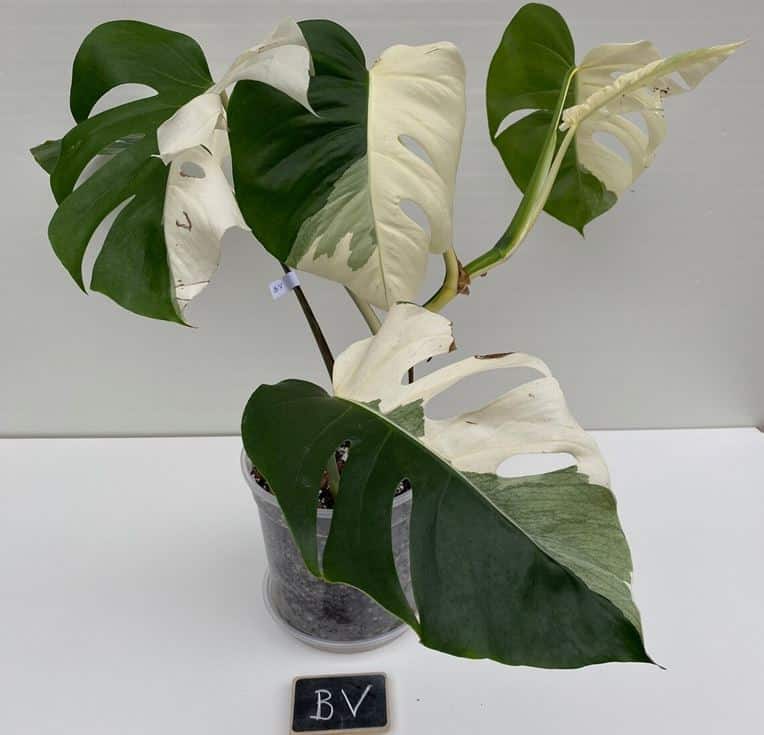
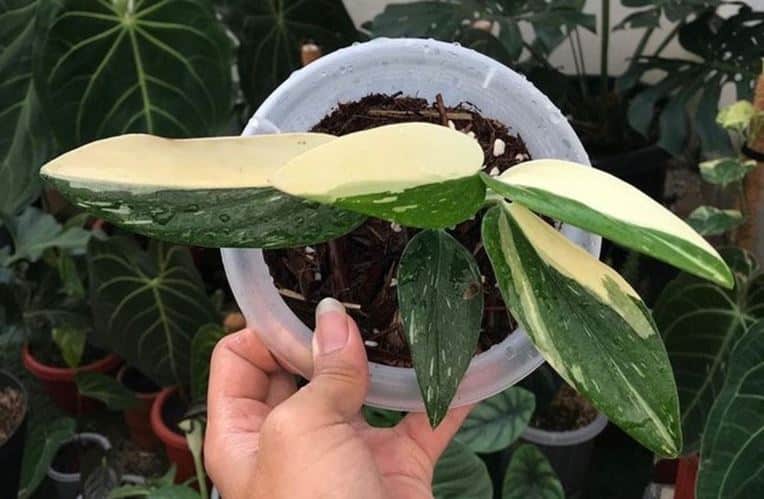
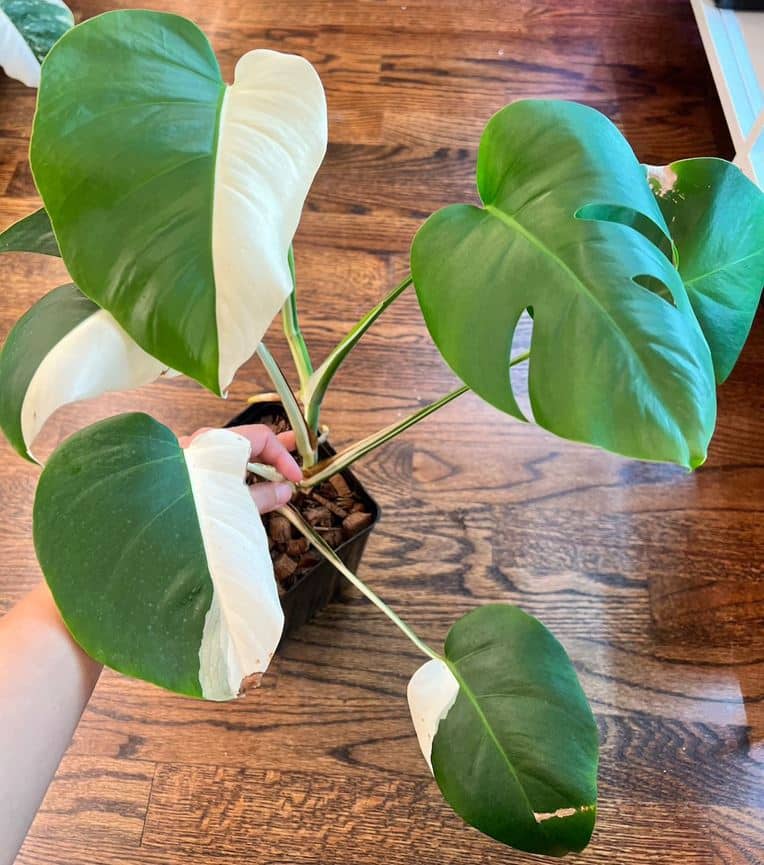
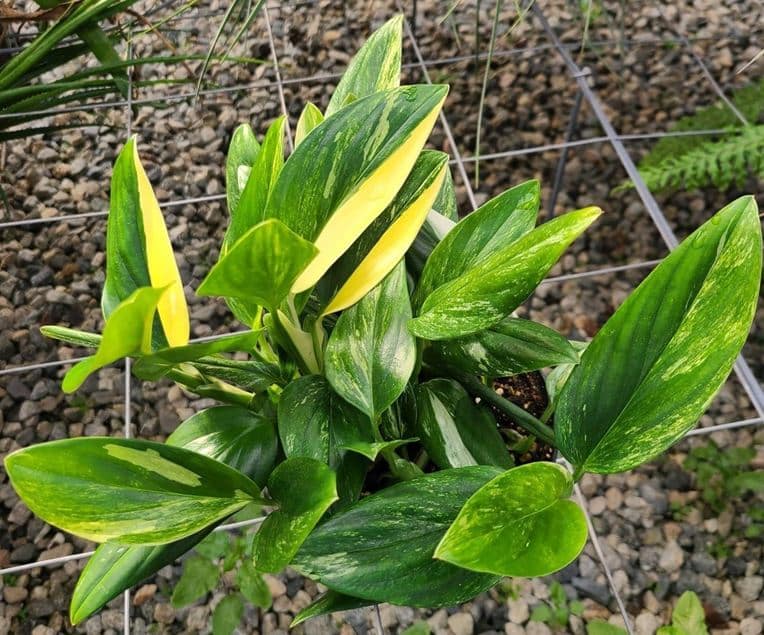
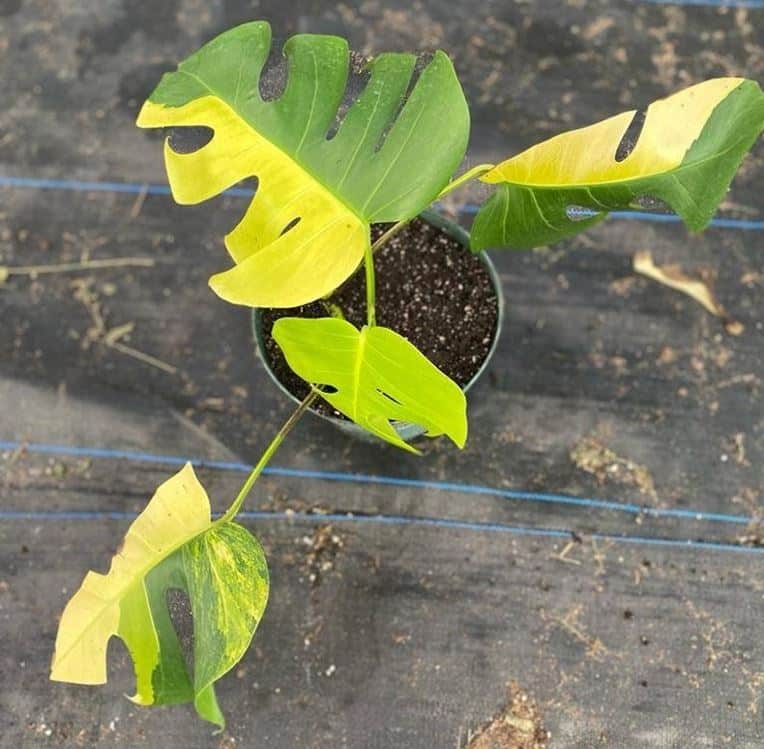
Can I propagate half-moon variegated Monstera?
Yes. You can propagate a half-moon variegated Monstera. To do so, you need the stem cutting with a node with a half-moon leaf. Both soil and water propagations are ok.
Unfortunately, you cannot use seeds since cell mutation responsible for the variegation isn’t carried through sexual reproduction. See more on Monstera propagation.




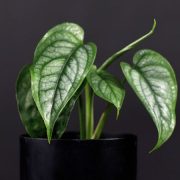
Leave a Reply